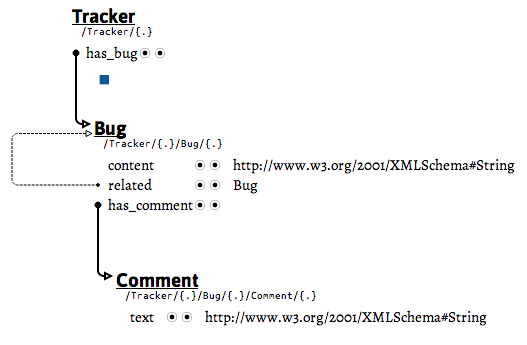- From: Roger Menday <roger.menday@uk.fujitsu.com>
- Date: Mon, 21 Jan 2013 13:30:34 +0000
- To: "public-ldp-wg@w3.org Group" <public-ldp-wg@w3.org>
- Message-ID: <E752695B-AE9D-4475-9549-7CA3460E0091@uk.fujitsu.com>
>>>> I hope so - I'm having difficulty seeing what state manipulations >>>> you have in mind. Do you have a concrete example? >>> >>> Yes ! our LDP example - the Bug tracker. >> >> "where servers which guide my clients through a service." >> >> What do you consider as guiding? >> >> I read "guiding" as, for example, the return indicates what the client can do next (in the same way that sending back a form on a multi step shopping process indicates the next steps). How does the bug tracker guide the client if it is not just constrains on input (roughly, documentation)? > > > It would be useful to have a number of examples of these. A client can discover from a Tracker resource that it keeps a property called :has_bug. It provides a list of parameters which can be consumed by a process acting for the link. This list of parameters is pretty much like a form. The client constructs an appropriate request from this form information, and posts to the endpoint of the processor. A new resource is created, and the client is referred to it in the response. From their new Bug resource, the client then discovers that there is a :related property. It discovers that the processor for the :related property simply needs an address of an Bug resource. It can then go on to discover that a new Comment can be created from the Bug resource, etc etc ... This is summarised in following picture. This is just a static rendering. In reality the server can evolve further, the links are discovered, can vary, and there is no hard-coded knowledge. The URL templates are only suggestions. Just to get that clear :) regards, Roger
Attachments
- text/html attachment: stored
- image/png attachment: bugtracker_api.png

- application/pkcs7-signature attachment: smime.p7s
Received on Monday, 21 January 2013 13:31:24 UTC